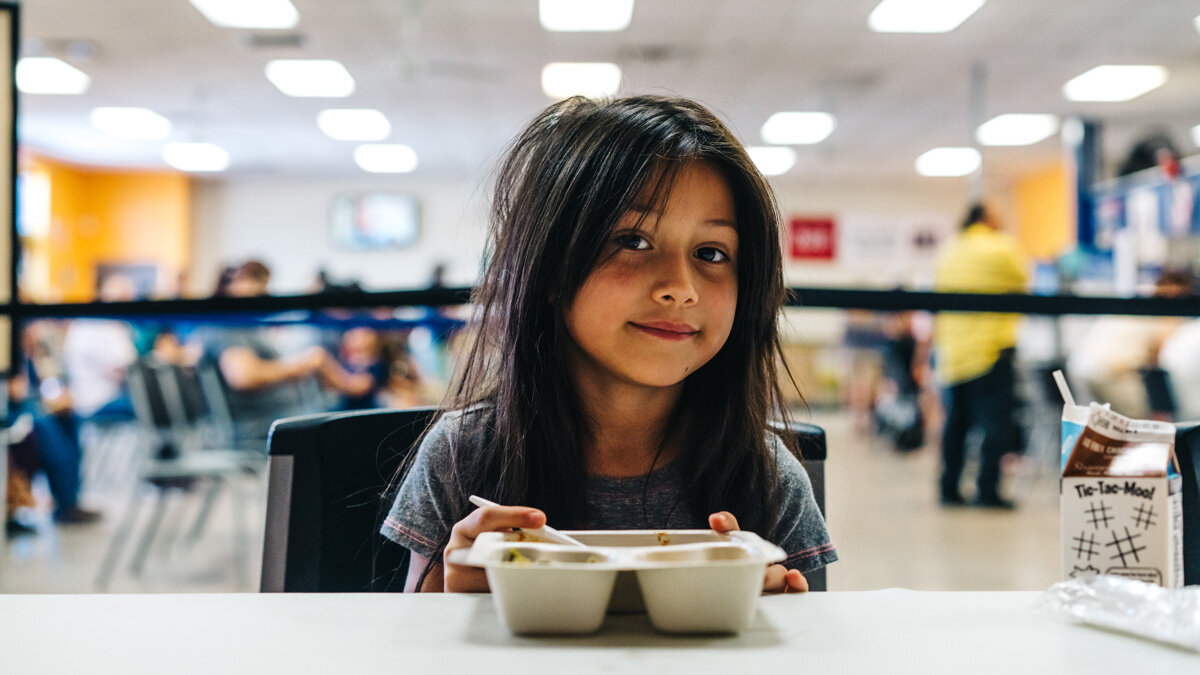What are Buddy Packs?
Thousands of children rely on free and reduced-price lunches at school, but what about their nutritional needs on weekends? Buddy Packs provide meals and snacks for elementary students to take home at the end of each school week, meeting that gap. Buddy Packs are pre-packaged bags with a variety of food each week, with items like easy-to-make meals, cereal and peanut butter. At upper-level schools, food is discreetly provided through school pantries. We distribute food to 7,500 children through the Buddy Pack Program each week during the school year at more than 150 schools in our 32-county service area.
"It gives me food when I need it. It helps my family out in ways you couldn't even imagine." - Buddy Pack Recipient
How much does a Buddy Pack cost to provide?
In 2020, The Food Bank developed a new Buddy Pack to meet the challenge of feeding students during the COVID-19 Pandemic. The change was so successful The Food Bank decided to make it permanent.
The new Buddy Packs are purchased from a third party already packaged, reducing the old packs' intense volunteer and storage needs. Because they are ordered pre-packaged instead of relying on what food is on hand, The Food Bank can regularly change the packs' items to make them more enjoyable and nutritious for kids. The old packs often included the same food each week, so they lacked variety. The new Buddy Packs also have more nutritional value, improving students' health and their ability to focus in the classroom. Staple items of the program, like cereal, shelf-stable milk and peanut butter, will still be in the new packs.
With this necessary change, the price of a single Buddy Pack also needed to be updated. The old price only included the cost of food and had not been updated for several years. The new Buddy Pack price consists of food, transportation, storage, and staff to fully represent the program's expenses.
With all those factors included, The Food Bank spends approximately $7.50 to supply one Buddy Pack to a student, giving them the nutrition they need for the weekend. A donation of $270 provides Buddy Packs to one student for a year.
What is the need for Buddy Packs?
One in six children in The Food Bank’s service area faces hunger on a regular basis, with more than half qualifying for free or reduced-price meals at school. Studies show children who face food insecurity are more likely to repeat experience problems at school, are more likely to suffer from anxiousness and irritability, and tend to have to repeat a grade at school more often than peers who are not food insecure. In our service area, teachers report improved grades, behavior and social skills when children receive Buddy Packs.
What do children and teachers say about Buddy Packs?
TEACHERS
IN YOUR OPINION, HAS THE BUDDY PACK PROGRAM BENEFITED THIS STUDENT?
“This is a brilliant child! She just has a very unstable home life. Buddy Packs give her food.”
“This child is often alone. This food allows him to feed himself without adult assistance.”
“He mentioned that this is the only food he has on the weekend.”
“This student needs all the help he can get. Trust me, he uses everything in his Buddy Pack.”
“Student asks if there are extra Buddy Packs. Fends for self at a young age. It’s not fair.”
CHILDREN
HOW DOES THE BUDDY PACK HELP YOU WHEN YOU’RE NOT IN SCHOOL?
“Gives me food. I really need food.”
“Me and all my cousins live with grandma, so it helps her with food for all of us.”
“You get to eat and it is yummy.”
“Makes me feel better.”
“We have enough food cause Buddy Packs help.”
“I wish we didn’t need this.”
“It gives me food to make me want to come to school.”
“We need this food.”
“It helps me when I don’t have no food.”


